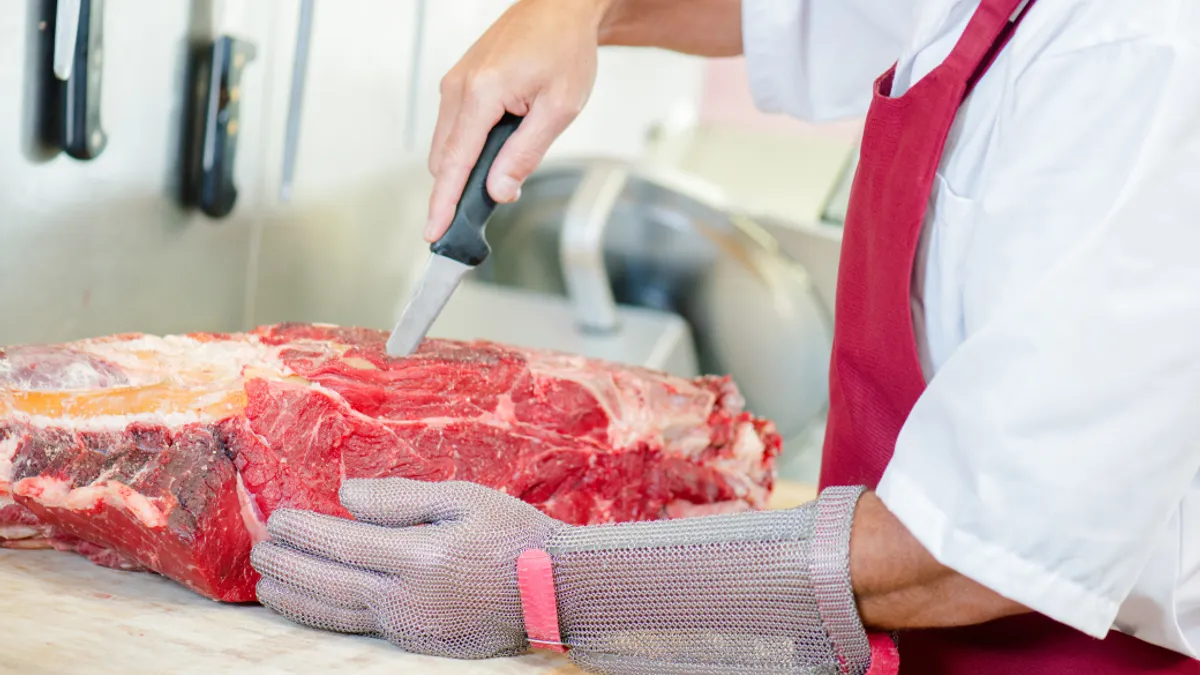In today's dynamic food industry, the twin goals of ensuring traceability and minimizing waste have emerged as pivotal aspects for both consumer safety and sustainability. Data analytics has emerged as a game-changing tool, providing invaluable insights and optimization opportunities across the entire food transformation process. In this comprehensive article, we delve into the profound impact of data analytics on food traceability and waste reduction, with a special emphasis on in-store recipe management and the intricate process of optimizing the transformation of a cow into an array of delectable cuts of steaks and other products.
Data-Driven Food Traceability
The integration of data analytics has empowered food processors to establish rigorous traceability systems that meticulously document the journey of food products from their origins on the farm to the dining table. When it comes to processing beef for example, a myriad of data points such as the farm of origin, transportation particulars, and a detailed processing history are diligently captured and subjected to rigorous analysis using cutting-edge technologies such as barcodes, RFID tags, and digital records. This meticulous real-time data capture ensures an unparalleled degree of transparency and accountability, effectively strengthening the entire supply chain.
Historical data on yield outcomes is analyzed using machine learning algorithms to identify optimal cutting techniques. By predicting the most efficient cutting methods, processors can minimize waste and utilize the cow leg to its fullest potential. This not only improves profitability and labor efficiency, but also reduces the environmental impact, making the food transformation process more sustainable.
In-Store Recipe Management
Data analytics offers significant benefits for in-store recipe management, especially when using specific cuts of meat from the cow example above. By analyzing consumer demand and purchase patterns, retailers can create tailored recipes that optimize the use of different meat cuts.
Through data-driven decisions, stores can reduce the likelihood of excess inventory and minimize food waste. Additionally, offering a diverse range of recipes maximizes product utilization, resulting in increased customer satisfaction and reduced food wastage.
Reducing Food Waste Through Data-Driven Insights
Data analytics empowers the food industry to combat food waste by identifying and addressing inefficiencies. Apart from optimizing the transformation process, analytics also aids in tracking product shelf life and managing inventory.
By closely monitoring expiration dates and stock rotation, food processors can reduce surplus stock and avoid unsold products reaching their expiry date. This approach significantly reduces waste and contributes to a more sustainable and responsible food supply chain. This strategic collaboration unfolds in a sequence of actions:
Precise Product Shelf-Life Monitoring
Leveraging historical data, real-time sales metrics, and external factors such as temperature and storage conditions, data-driven algorithms predict the lifespans of products with remarkable accuracy. This proactive forecasting equips food processors with the insight needed to orchestrate timely product movements. As a result, products can be positioned to match their expiration timelines, effectively averting the wasteful scenario of edible items going unsold and reaching their expiry dates.
Streamlined Inventory Management
Armed with an array of real-time insights, food processors gain unparalleled mastery over inventory levels. Patterns of consumer demand, historical sales trends, and even contextual factors like seasonal shifts are woven into the analytical tapestry. This intricate interplay empowers processors to adjust supply with precision, maintaining just the right equilibrium. As a consequence, surplus stock and the ensuing waste are nipped in the bud, giving rise to a leaner and more resource-efficient supply chain.
Proactive Stock Rotation: A Shield Against Waste
Powered by algorithms that account for product attributes, demand patterns, and shelf-life intricacies, processors implement proactive stock rotation. This tactical approach ensures that products nearing their expiration dates are brought to the forefront, where consumer eyes fall first. By orchestrating the timely sale of products and reducing the chances of goods languishing on shelves, data-driven stock rotation minimizes the chances of waste, transforming the supply chain into a well-calibrated mechanism.
Conclusion
Data analytics serves as a powerful tool for enhancing food traceability and minimizing waste in the food transformation process. From tracking the source of food products to optimizing yield and recipe management, data-driven insights revolutionize the way the food industry operates.
As businesses and consumers increasingly prioritize sustainability and food safety, the integration of data analytics into the food transformation process becomes even more critical. By leveraging analytics, we can build a more transparent, efficient, and environmentally conscious food system that benefits everyone, from producers to consumers and the planet as a whole.










